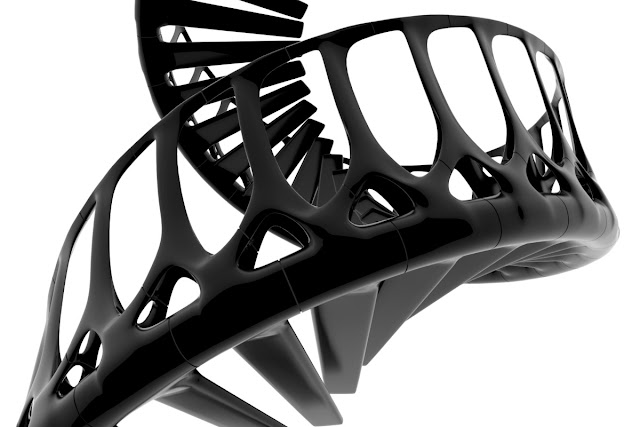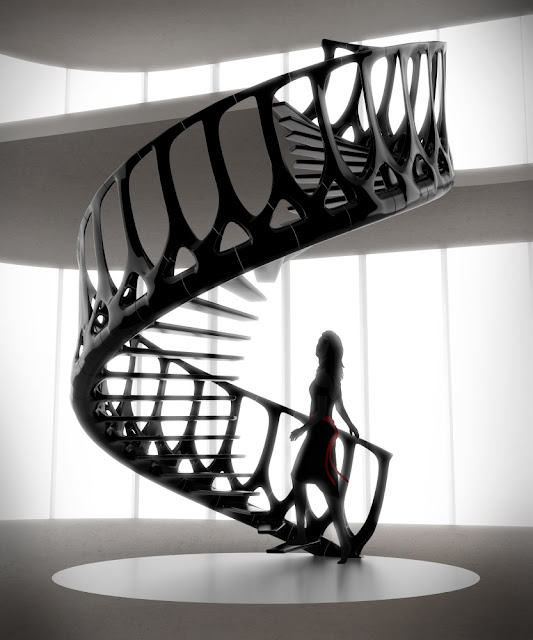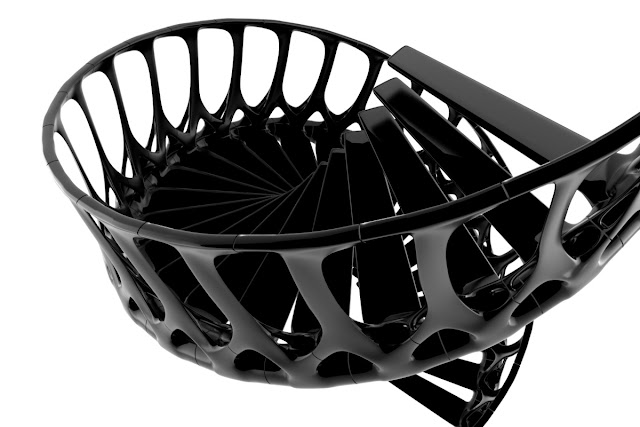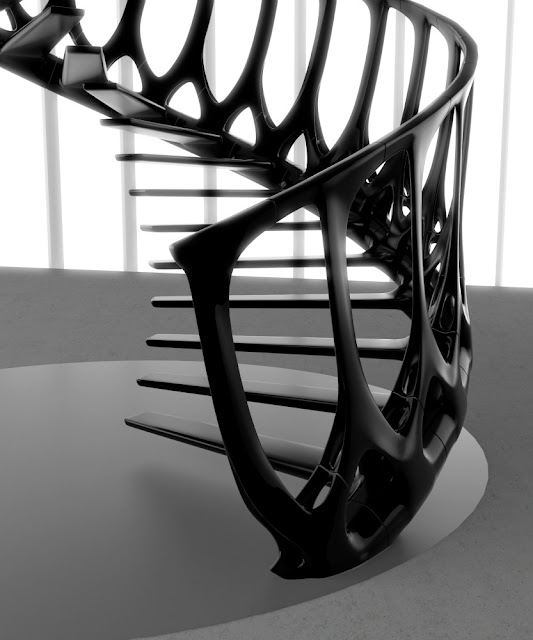Monday, February 11, 2013
Vertebrae Staircase Concept Inspired by Whale Skeleton
Andrew Lee McConnell
| Inspired by the spine of a whale, the Vertebrae Staircase by Andrew Lee McConnell is not simply mimicry of organic form but an exploration in shaping structure. |
Much of the design work went into refining the single component, or vertebra, that mate with each other creating a unified spine running from floor plate to floor plate. These interlocking vertebrae create a rigid and self-supporting structure.
The outer surface is composed of multiple layers of a durable composite fibre material while inside are the key structural elements. The vertebrae are mated using steel fittings and locked together with steel pins.
When all the connections are made, continuous structural spirals run through every vertebra at the hand rail and beside each step, reinforced by structural foam and a network of steel rods. Steel plates connected to the slightly modified base and top vertebrae are anchored to the floors.
Beyond this, there are no hidden supports as the Vertebrae Staircase is designed to act as one structural element, bearing the loads of its users and transferring these forces to the floor plates. And the pinned connections at the floor plates combined with the connections between vertebrae allow the staircase to successfully resist twisting and rotational forces that result from the cantilevered spiral and cantilevered steps.
Step, banister and hand railing – McConnell could clearly see all these elements contained within a whale's vertebrae and spine. The Vertebrae Staircase is a reconfiguration of this familiar form resulting in a unique and functional design. —
SOURCE Design Playgrounds
| By kree8tiv | Subscribe to kree8tiv |
|
| |








No comments:
Post a Comment